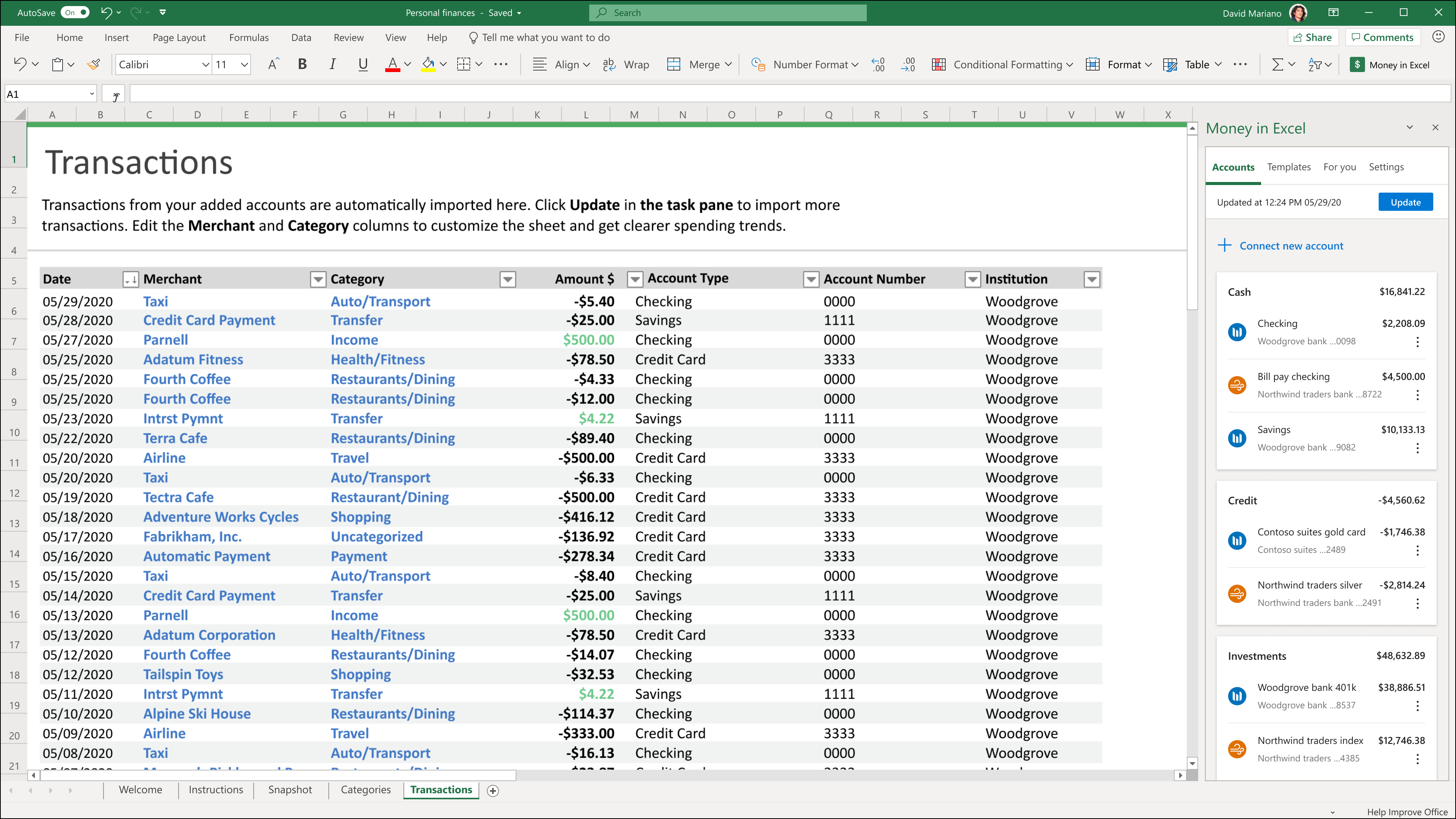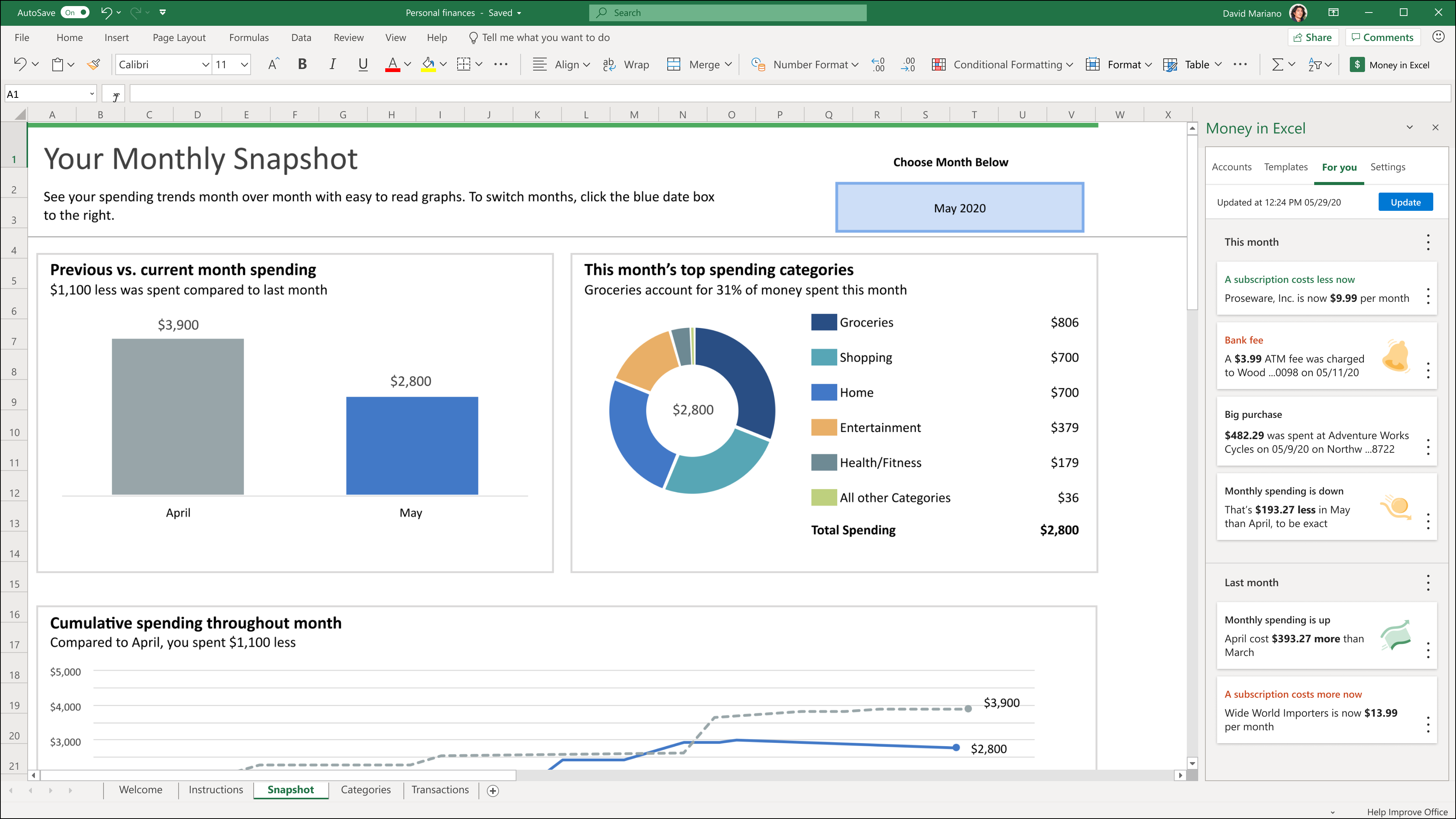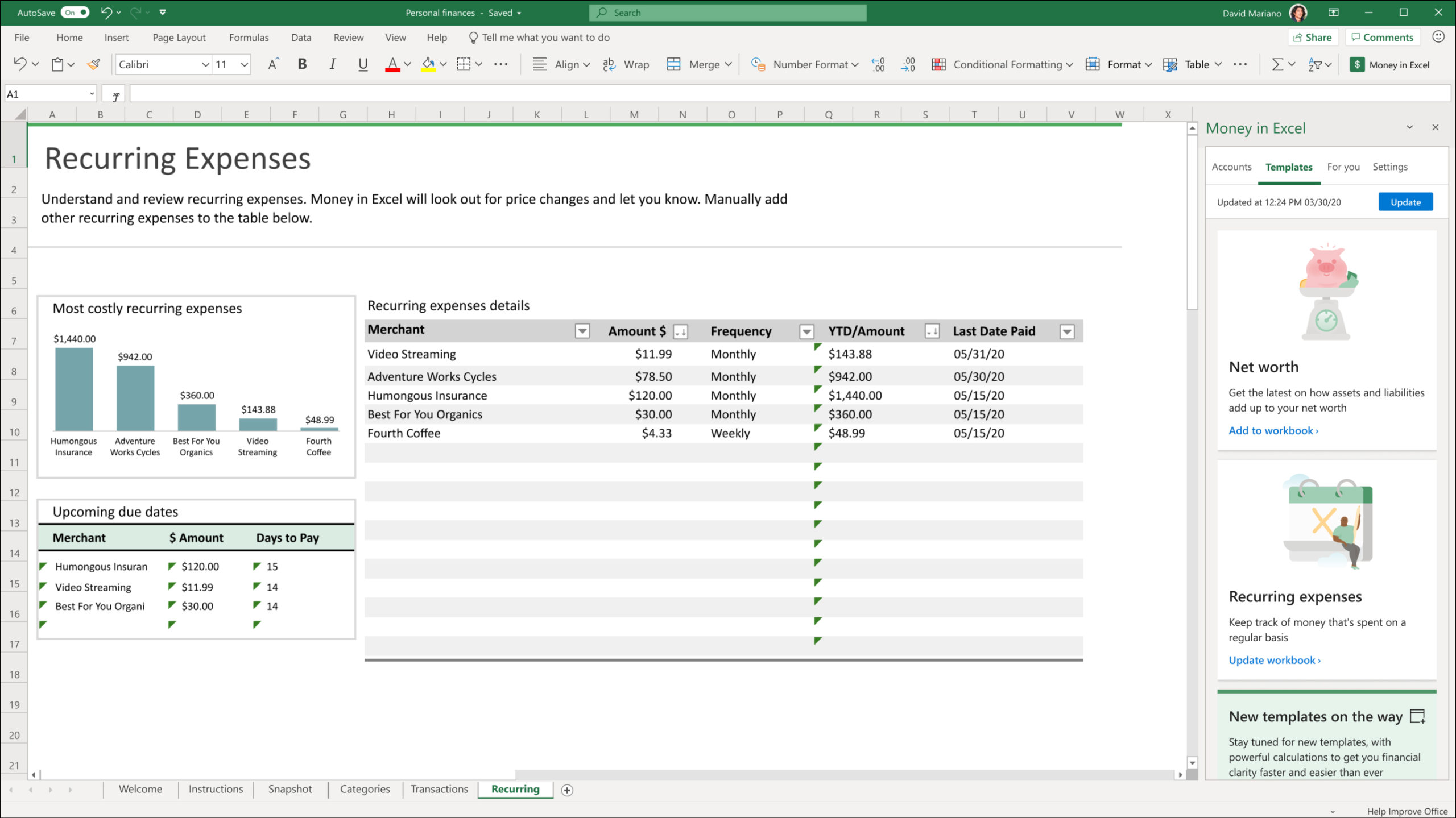Manage your money—
Money in Excel is a dynamic, smart template and add-in for Excel that allows you to securely connect your bank, credit card, investment, and loan accounts to Excel and automatically import your transaction and account information into an Excel spreadsheet.
If you’re a current Microsoft 365 Personal or Family subscriber, simply go to this link to download the template. Once downloaded, open the Excel template1 and follow the on-screen prompts to connect your financial accounts using a secure third-party plugin supported by Plaid2 (Plaid currently supports most major U.S. financial institutions). Once your account information is verified, the workbook will be updated with your latest transaction history3 and is now ready for use.
Now, let’s look at how Money in Excel can help simplify the task of managing your finances.
Keep track of your money
Once your financial accounts3 are connected, Money in Excel will automatically import your transaction information from all your accounts into one workbook. You no longer need to spend hours manually setting up a personal finance spreadsheet from scratch; Money in Excel does it for you in just a few seconds. And every time you want to update the workbook with the latest transactions, just click the Update button and get the latest snapshot of your transactions and accounts without ever leaving Excel.
Get closer to your financial goals
Once your transaction information is imported into Excel, it’s easy to track your spending habits to help stay on course and get closer to your financial goals. Use the “Snapshot” sheet to get an instant glimpse of how you’re spending across various categories such as groceries, household items, rent, and more. With the help of easy-to-read graphs, you can quickly track how your spending compares month over month. And to help ensure you are not caught unaware of any unwelcome transactions, Money in Excel will alert you to increases in your subscription fees, changes in bank and overdraft charges, or any big purchases that were posted during the month.
Easily customizable to suit your needs
We know people often choose Excel to manage their finances because it allows them to take a more personalized approach. With this in mind, we designed Money in Excel to be easily customizable to suit your needs and goals. For example, if a certain transaction does not fall within an existing spending category, you can simply add your own. If you want to perform quick custom analysis, you can copy the relevant transactions into a new Excel sheet and use any of your favourite Excel features to do quick calculations. And while Money in Excel already comes with charts that have been created based on your transaction information—
From helping you track your monthly spending to alerting you about subscription price increases, Money in Excel makes it easy to manage your money.



Comments
Post a Comment